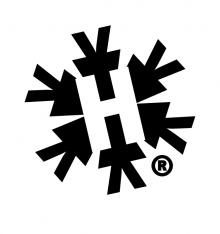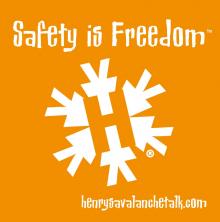HAT Snow Report Jan 9, 2010
We’ve had cold weather and quite a bit of new snow over the last week (60cm to close to a metre in places from Monday to Saturday January 9th) at 2200 metres and above. Since the conditions have been so variable over the last few weeks, people are asking the question, “how can we tell if it’s safe”? Our response is, “It depends on you: where you go and when, how you go down or up and how well prepared you are”. This week past week was less variable than the week before in terms of the temperature (it’s just been cold this past week!), but we have lots of new snow again.
So, we’re going to continue to answer the question, “is it safe out there”, with our 2nd of 3 answers: it depends how you go down (or up).
In last week’s report we started by putting together pieces of the puzzle in order to look at the 1st of 3 answers, deciding “where you go and when” which included the avalanche forecast bulletin, hazard rating, talking to local professionals, looking at recent avalanche activity and low slope angles (e.g. first thing in the morning I start on slopes of about 25° or less – about red run steepness and less. Then I may go steeper or content myself on the lower slope angles if I feel that going steeper is too risky).
For the 2nd answer, how you go down (or up), picture yourself on a nice fairly steep slope with fresh snow that you’ve decided to go for based on the points in the paragraph above. It looks great! Now how can you have the most fun and still minimize the risk? Go one at a time on the exposed part of the slope; ‘exposed’ can be to large slopes above OR terrain traps below (these ‘traps’ can be cliffs under you, basins/holes under the slope where you can get buried deep and other obstacles like trees or even lakes (more than one person has been carried into the lake in Tignes le Lac for example).
Regroup at ‘islands of safety’ which are places that are not exposed to slopes above you.. and remember that the victim of an avalanche almost always triggers that slope themselves (or someone in their group does.. or someone above). Finally, having an escape route in mind, as a last resort, can work in the first 1-2 seconds if you have the luck and presence of mind to get off of the moving slab in front of it/to the side or above the fracture.
Tune in next week for the 3rd and final answer to the question, Is it safe out there?, which is Being well prepared.
Have Fun and Be Safe!
Off Piste & Avalanche Awareness Talks: Week of 10 January:
Monday 15.30 sharp Basic Talk at the Moris in Val d’Isère Tuesday 17.45 sharp Basic Talk at the Bagus in Tignes Weds 18.00 sharp Basic Talk at the Pacific Bar in Val d’Isère
You need to show up at least15 mins before the talk to take advantage of the deals on food & drink!
Tickets are €7.50 (one person under 18 per adult free) and includes great deals on food and drinks at each place! Pre-booking on line price is: £6 on www.henrysavalanchetalk.com (if you can’t come to a talk see our on-line talks on the web site)
HAT is taking the Talks on-snow this year for people who want to learn more in Val d’Isère & Tignes!
See www.henrysavalanchetalk.com for more info on these practical short courses.




